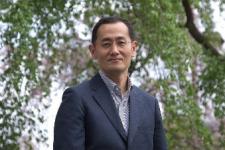Aggregated News

“We have colonies.”
Shinya Yamanaka looked up in surprise at the postdoc who had spoken. “We have colonies,” Kazutoshi Takahashi said again. Yamanaka jumped from his desk and followed Takahashi to their tissue-culture room, at Kyoto University in Japan. Under a microscope, they saw tiny clusters of cells — the culmination of five years of work and an achievement that Yamanaka hadn't even been sure was possible.
Two weeks earlier, Takahashi had taken skin cells from adult mice and infected them with a virus designed to introduce 24 carefully chosen genes. Now, the cells had been transformed. They looked and behaved like embryonic stem (ES) cells — 'pluripotent' cells, with the ability to develop into skin, nerve, muscle or practically any other cell type. Yamanaka gazed at the cellular alchemy before him. “At that moment, I thought, 'This must be some kind of mistake',” he recalls. He asked Takahashi to perform the experiment again — and again. Each time, it worked.
Over the next two months, Takahashi narrowed down the genes to just four that were needed to wind back...



